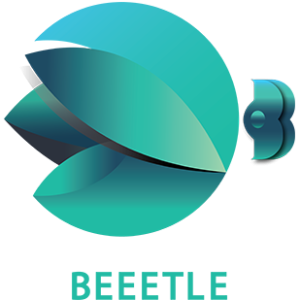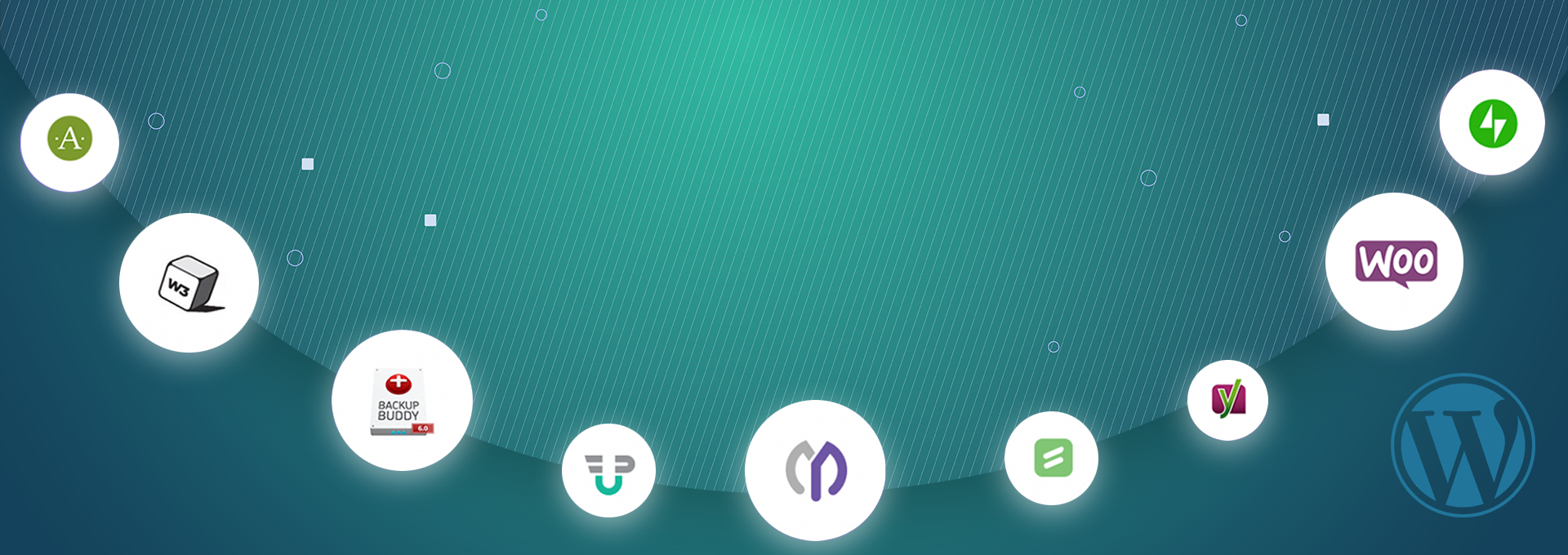Google’s Core Web Vitals: How to
Optimize Your Website?
- btle_admin
- March 14, 2022
- 11:57 am
- No Comments
Are you interested in ranking higher in Google search results than your competitors’ websites? Obviously, yes! The variables that go into ranking a website on the first page of Google must be taken into account to achieve this goal. Google has recently changed its ranking algorithm, and the user experience of your website is now considered one of the ranking factors.
Google has revealed several components contributing to a web page’s overall experience with this algorithm change. However, among the numerous aspects of your website, the primary web vitals are the most important ones since they influence how your visitors perceive your website.
In June 2021, Google included core web vitals as an essential ranking factor. However, have you actually taken the time to learn all there is to know about them? This blog examines the critical web vitals in greater depth, including how important they are, how they affect your website, and how to improve them.
Google announced its intention in May 2020 to prioritize user experience when ranking web pages. Also, several site development tools like WordPress provide different plugins to boost your website’s ranking. A user-friendly mobile interface, HTTPS, and the essentials of a great web experience were among the variables it wanted to begin measuring.
So, let’s go a little further to learn about Core Web Vitals and how you can make your website more user-friendly.
Learn why and how to optimize your core web vitals for better page ranking and user experience such as:
- Important Ranking factors for Google
- Learn How to Know Your Core Web Vitals Score
- Important Core Web Vitals
- Optimizing Your Website’s Core Web Vitals
How does Core Web Vitals Help You?
Despite changes in technology, content continues to be crucial. According to Google search engine results, whenever two sites have similar text and popularity, the one that offers the best browsing experience gets a higher ranking.
In addition to improving the page rank, high-performance sites are now eligible for inclusion in the mobile search carousel. Previously, this was only available through Accelerated Mobile Pages (AMP), which required its content to be migrated to a Google-hosted site. AMP has faced criticism, mainly because the pages may not be as fast as a well-optimized WordPress site. Now, this is not a requirement.
The faster and more responsive your site is, it is more likely to appear higher in Google search results, regardless of which option you select. However, there’s room for improvement because the average mobile page is over 2 MB in size, performs over 60 HTTP requests, and takes 16 seconds to render fully. We’ll show you the best way to make such improvements.
Ranking factors for Google
Before you evaluate performance, consider these four fundamental ranking elements:
- HTTPS: A secure connection is required. Is the network between the browser and the web server secure on your site?
- Mobile-friendliness: You must have a mobile-friendly website. Is your website mobile-friendly? Would you be able to render it without it overflowing? Are the text dimensions large enough? Is the clickable spot rough enough to be controlled by a finger?
- No interstitials: Interstitials that take up too much screen real estate should be avoided. Is the entire content readable? Do banners or pop-up interstitials partially obscure it? Due to your advertising or marketing promotions?
Once you have met these standards, your site’s performance will be evaluated.
Understanding the Core Web Vital and How They Affect SEO
A core web vital will include in Google’s Page Experience metrics. Analyzing websites’ loading speed, interactivity, and visual stability determines the overall user experience. Google measures fundamental web vitals based on real-time usage statistics and field data. Therefore, the primary web vitals are calculated based on actual interactions between visitors and a web page.
During the early days of SEO, the main focus was on using keywords to rank web pages on Google. Unfortunately, many websites engaged in keyword stuffing, which caused significant damage. As time passes, Google has developed new elements that determine a website’s ranking on its results pages.
User experience metrics are now a crucial ranking factor for Google. Therefore, the high rate of page abandonment for websites that do not address their core web vitals makes sense, given the high rate of page abandonment for websites that don’t fulfill Google’s core web vitals. However, it would be best if you remembered that basic web vitals by themselves may not guarantee you a top spot in Google’s results. Despite being a large enough component to impact, the algorithm also considers over 200 other aspects.
Getting to Know Your Core Web Vitals Score
Google considers Core Web Vitals essential aspects of your webpage’s overall user experience, affecting your search rank. Therefore, Google uses these elements to rank your site based on your Core Web Vitals Score.
Google updated three significant web vitals in June 2021: Largest Contentful Paint (LCP), First Input Delay (FID), and Cumulative Layout Shift. (CLS). The First Contentful Paint (FCP) is essential with these three criteria.
First Contentful Paint (FCP): Why it’s Important
Core Web Vitals are important metrics for the best page experience. Still, we believe one more web vital is just as important because it can significantly impact the three Core Web Vitals – First Contentful Paint (FCP). It is a metric Google defines as the time it takes to render any part of a page’s viewable content after it has started loading.
The first contentful paint (FCP) has an enormous impact on the other Core Web Vital indicators, and they cannot track until the FCP has occurred. Therefore, in addition to improving the FCP, other scores will improve, especially the Largest Contentful Paint score (LCP).
What are the 3 Core Web Vitals?
Core Web Vitals are continuously updating metrics that Google applies to all web pages to determine the best way to gauge the page experience of real-world users. The three fundamental measurements in this set are the Largest Contentful Paint (LCP), First Input Delay (FID), and Cumulative Layout Shift (CLS).
- Largest Contentful Paint (LCP)
Largest Contentful Paint (LCP) is a metric that Google defines as measuring the rendering time of the most prominent image or text block displayed in a viewport. At the end of the rendering process, the LCP is the largest viewable block of your page.
As soon as a user opens a page, this element is the first thing they see. It has an imperative impact on the user experience because a good score will make the user think the site loads faster, while a bad score will make them frustrated. Additionally, it demonstrates that this score will lead to effective SEO ranking in the future.
Google recommended LCP score is shown below:
Good | Need Improvement | Poor |
| <=2.5s | <=4s | >4s |
- First Input Delay (FID)
The First Input Delay (FID) is a metric for measuring a page’s interactivity, or how quickly it responds when a user engages with it. A low FID results in a responsive page that creates a positive first impression, whereas a high FID results in unresponsive pages and frustration.
FID score recommended by Google is shown below:
| Good | Need Improvement | Poor |
| <=100ms | <=300ms | >300ms |
When a user tries to contact a website, and it does not respond right away, they become frustrated. An increase in user satisfaction requires a reduction in annoyance. The Page Experience SEO metric will directly impact SEO ranking in an upcoming update to the algorithm.
- Cumulative Layout Shift (CLS)
CLS (Cumulative Layout Shift) is an effective indicator of a website’s stability by tracking the user’s visual experience on a page. It quantifies changes in a layout that can happen as a user navigates a website. Improving user experience and usability means lowering this score.
CLS score that is needed for an optimized site is as follows:
| Good | Need Improvement | Poor |
| <=0.1 | <=0.25 | >0.25 |
It is one of the most unpleasant experiences for end-users when material switches unexpectedly. For example, a user may lose track of where they are in the process or click/tap on the wrong object. As a result, it’s incredibly aggravating and detrimental to the user experience, prompting Google to include it in its ranking factors.
How can you find your Core Web Vitals Score?
- Page Speed Insight:
You can determine your Core Web Vitals score by running the PageSpeed Insights test on the page and searching for Field Data. Your page must pass all three Core Web Vitals to pass the Core Web Vitals evaluation.
To improve your Google results, you must optimize your web app’s page speed. Pagespeed Insights is a valuable tool that allows you to assess the user-end performance of your website by examining its speed. The program then assigns a score to your webpage based on its study. This score is also known as your website’s Google PageSpeed score, and it is influential to your Google ranking. For example, your page is performing well, with a score of more than 85. The score ranges from 0 to 100.
Google PageSpeed Insight analyzes various factors to determine your web page’s PageSpeed score. Some of these elements are:
- Loading time for content above the fold: The time it takes from when a user requests a new page to when above-the-fold content appears on the browser.
- Time to load the whole page: It is the time that elapses between a user requesting a new page and the browser fully displaying it.
- Lighthouse:
With the Lighthouse, you get a Google PageSpeed Score divided into fast 90-100, average 50-89, and sluggish 0-49. According to the Lighthouse scoring documentation, the Pagespeed score is then calculated by measuring the following parameters:
- FCP (First Contentful Paint): In this step, the image or text appears or paint for the first time.
- First Meaningful Paint (FMP): This is where the page’s primary content appears.
- Speed Index (SI): The page load time measures how quickly the contents of a web page appear.
- FCI (First CPU Idle): When the main thread is idle enough to accept input.
- Time to Interactive (TTI): It occurs when the principal network and thread have been silent for at least 5 seconds.
Google Lighthouse is one of these tools that provide insights that help us optimize our websites. A Lighthouse report will be generated using this application, which allows you to evaluate a web page’s user experience, usability, and other factors to improve its overall performance.
On your homepage, Google Lighthouse measures five factors: accessibility, SEO, performance, and web app adaptability. These metrics allow you to assess how your website performs in these critical areas and make the necessary changes.
Below is the result after running the Lighthouse tool:
Core web vital metrics is seen under the performance tab:
- Search Console
Search Console now provides a comprehensive Core Web Vitals report that helps you analyze web pages across the site.
This analysis identifies the pages that need your attention based on real-world data collected by the Chrome UX report.
If you check the report on mobile, you’ll see a details page as shown below:
- Chrome UX Report
Chrome User Experience Report (CrUX) is a report that analyzes publicly available data about actual user experiences on millions of websites. Rather than lab data, this report focuses on the real-world aspects of all of the web vitals. CrUX core web vitals landing page is shown below:
- Chrome Dev Tools
With Chrome DevTools, web admins can more easily identify and fix any visible problems causing CLS to rise. The tool also monitors Total Blocking Time (TBT), which can help you optimize your website’s First Input Delay.
CLS is seen in the summary tab by selecting the layout shift and hovering over the moved from and to fields.
While TBT can be seen from the footer of the Chrome DevTools Performance panel.
- Web Vitals Extension
A new extension is available on the Chrome Web Store that you can download. In real-time, it monitors all three basic web vitals.
Image source: web.dev
Do Your Search Rankings Depend on Your Score?
It is vital for search engine marketers to determine the importance of passing the test or scoring well on the test, or even scoring well on the test in the first place. What is the point of having a decent page performance score but failing Core Web Vital? The good news is that optimizing for Core Web Vitals will improve your search ranking even if your site never passes. Due to this, Google declares that any improvement is better than none. Even if you continue to improve your page after it has passed, there will be no additional ranking boost.
Discover How to Optimize Your Website’s Core Web Vitals
The three key web vitals demand distinct metrics for optimization because they measure your website’s user experience in different ways. Some of the methods you can use to improve your website’s essential web vitals are as follows.
- Largest Contentful Paint (LCP)
The easiest way to enhance LCP, which is a measure of loading speed, is to remove unnecessary code from your website, including third-party scripts.
You can also upgrade your hosting web service to faster retrieve data from the website server. Using lazy loading of photos and videos and media compression is another way to address this essential web requirement.
- Cumulative Layout Shift (CLS)
Using size attribute dimensions for media and infographics is the most effective way to handle CLS since it measures the number of unexpected layout shifts encountered by users. The browser knows how much space each element will take up, preventing last-minute changes.
Making sure your website’s ad pieces are appropriately positioned is another way to reduce CLS. It prevents unexpected advertisements from appearing on your website and shifting the content.
- First Input Delay (FID)
Optimizing your website’s FID is most easily achieved by minifying or deferring Javascript files. While JS files are loading, interacting with a website becomes extremely difficult. It is also possible to remove any redundant code from your third-party programs. It is also essential to install a browser cache to easily retrieve frequently accessed material from the server and minimize delays.
So, Do You Optimize Your Web Vitals Yet?
According to Google, the user experience will be a primary factor in determining website rankings in the future. As more improvements occur, factors like core web vitals will become more relevant.
Our digital marketing experts can help you optimize your website core web vitals. Need assistance with optimizing your website core web vitals? Reach out to our goal-oriented digital marketing agency to start your optimization process for the Google Page Speed Experience.
Popular Categories
Newsletter
Get free tips and resources right in your inbox, along with 10,000+ others





